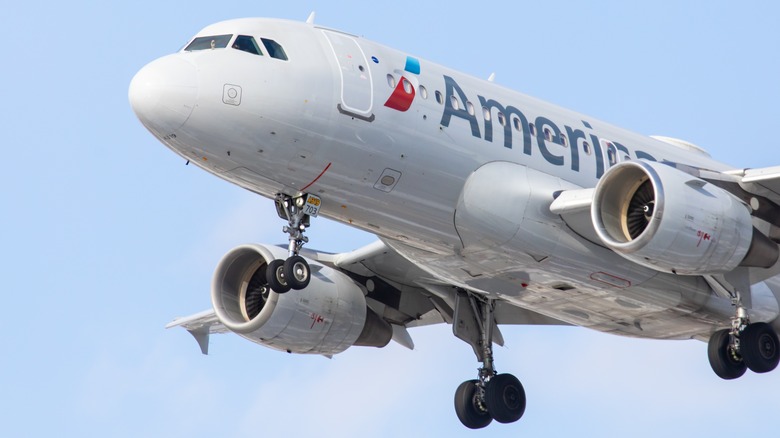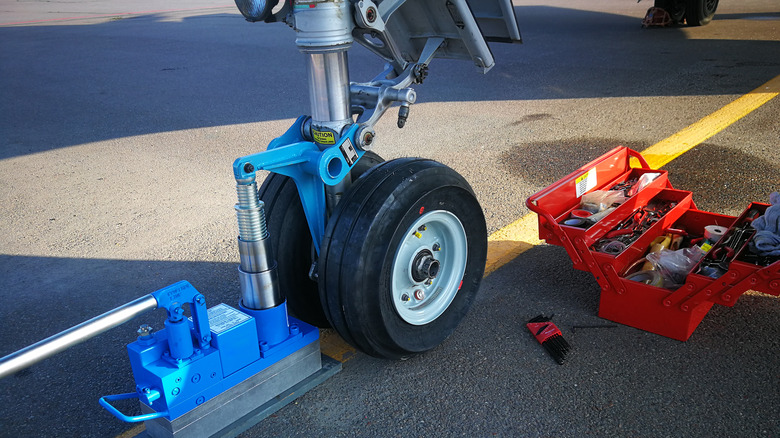What Does It Mean When There's A Nose Wheel Shimmy On A Plane? (And Is It Still Safe To Fly?)
Picture this: You're on a plane, minutes away from either leaving the ground or touching down at your destination, when you suddenly feel a strange vibration. Maybe you're not flying in extreme weather, and maybe it's only for a moment, but it's enough for you to notice. While the airplane's tire is probably not exploding, this odd shaking, known as a nose wheel shimmy, can put you into panic mode and cause you to grip the armrest a little bit tighter.
Nose wheel shimmy is an oscillation of the landing gear's front tires and is usually due to the tires not being properly inflated or being uneven because of tread wear. The problem can be made worse by mechanical issues in the nose and steering, which can cause even more shaking. While nose wheel shimmy doesn't necessarily mean you're in immediate danger, it's also not safe to fly on a plane with nose wheel issues that haven't been addressed.
Experienced pilots know when something doesn't feel right, and in many cases, the easiest answer is to slow the plane down when a shimmy happens. When it comes to smaller aircraft, a pilot could even stop the engine upon landing, before the shimmy causes any serious damage to the plane.
A plane's nose wheel needs regular maintenance to ensure safety
The shaking you're feeling when experiencing nose wheel shimmy on a plane is likely being alleviated by the plane's shimmy damper, which is essentially a shock absorber. The damper doesn't stop the problem, but it does decrease the impact on the plane itself and also helps the pilots maintain control. Even if there are issues with the nose gear, a fully functioning shimmy damper can go a long way to preventing any real problems, whether you're taking off or landing.
However, shimmy dampers need regular maintenance to ensure top performance, which can be something simple like topping off the hydraulic fluid. Or it could be more serious, like replacing the damper altogether, if it's worn out. Despite its ability to decrease the effect of nose wheel shimmy, the shimmy damper just wasn't made to withstand major steering issues in the plane.
Those issues could stem from the nose tire, which is typically filled with nitrogen instead of air, as too much or too little can contribute to the shimmy. Then there are the torque links and steering rods, which can both malfunction due to excessive wear. After those components are addressed, an additional nosegear steering collar shim may need to be installed to ensure a smooth flight.

